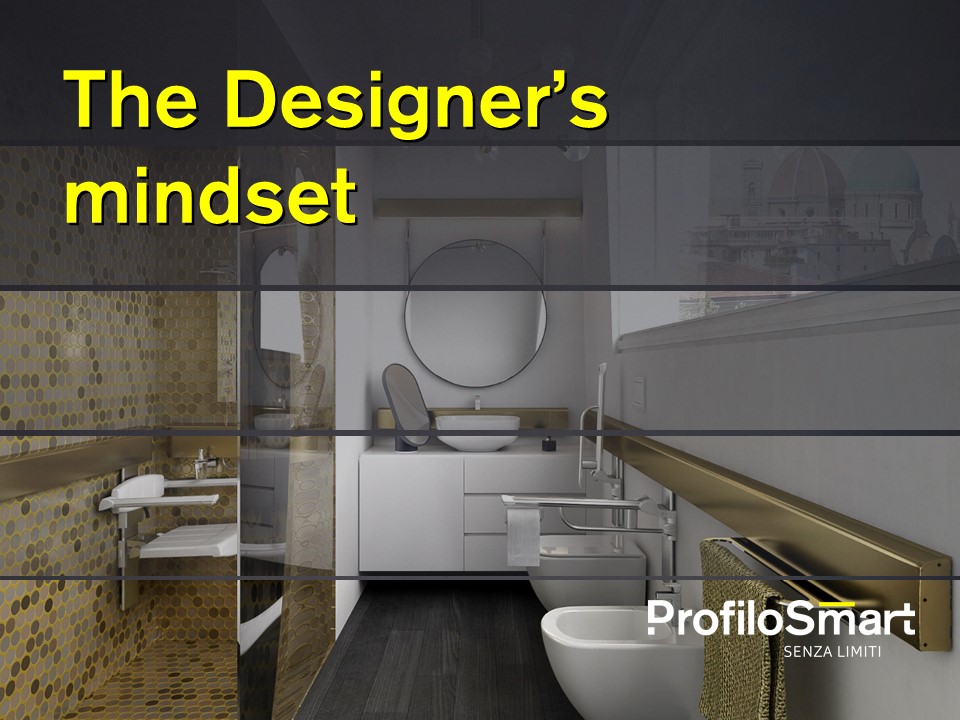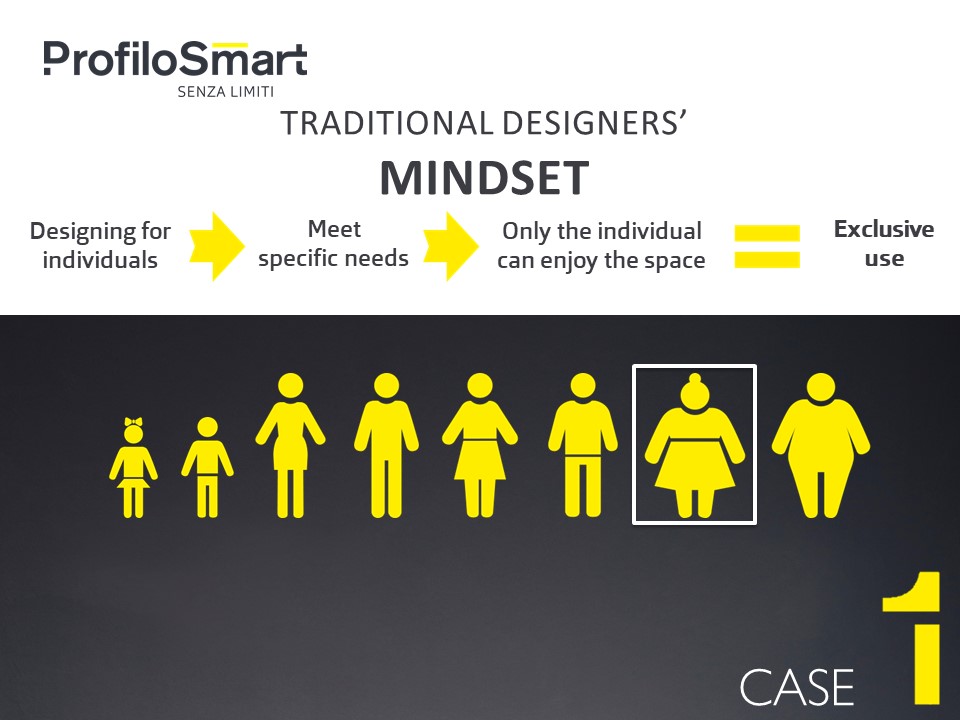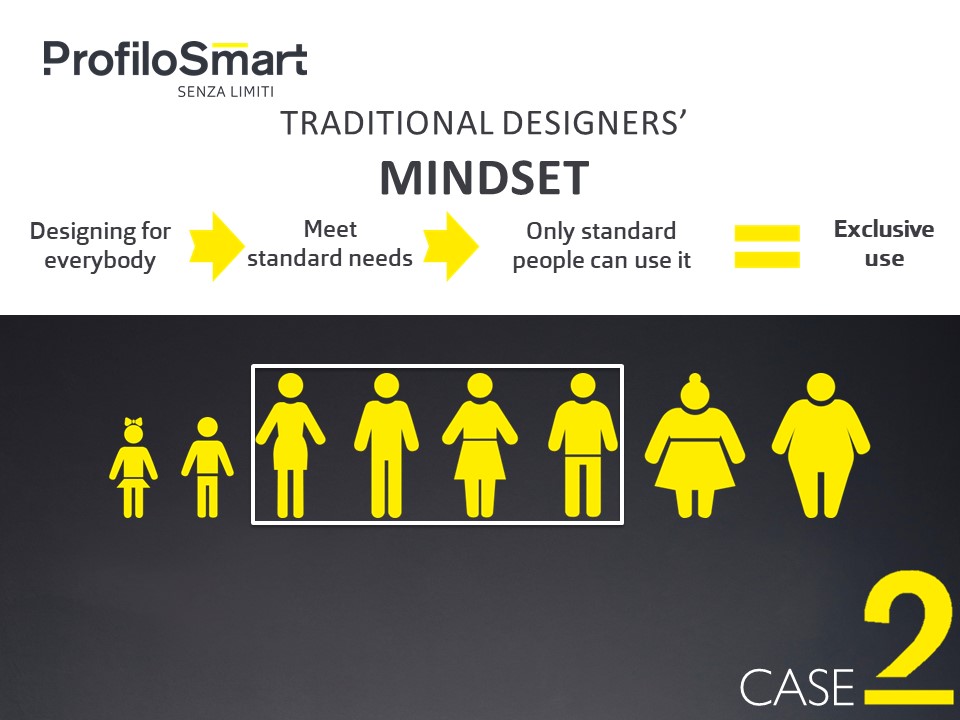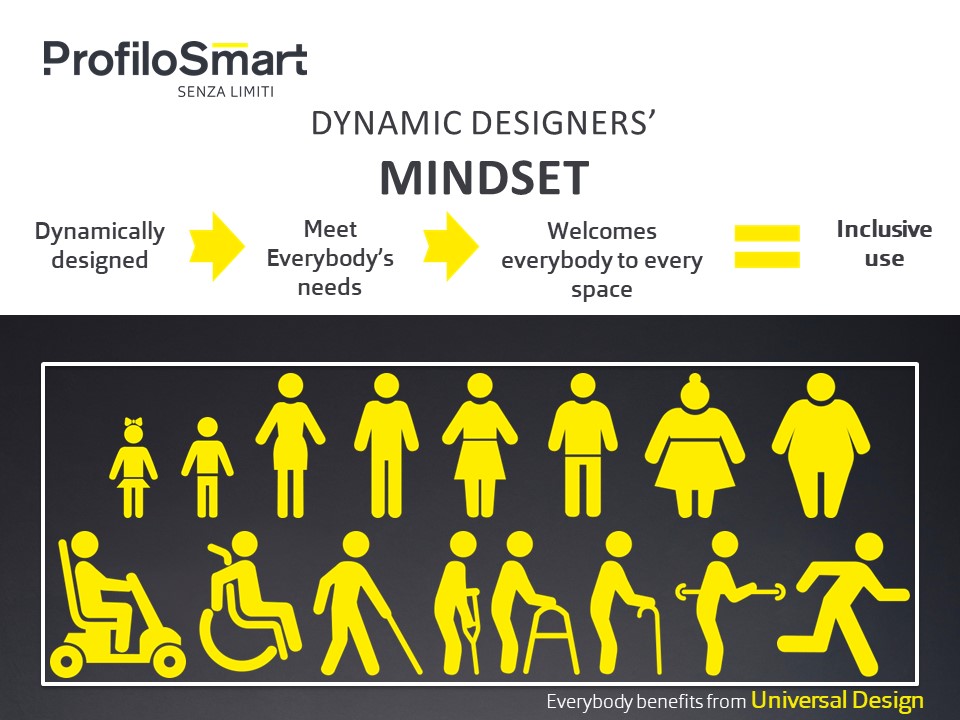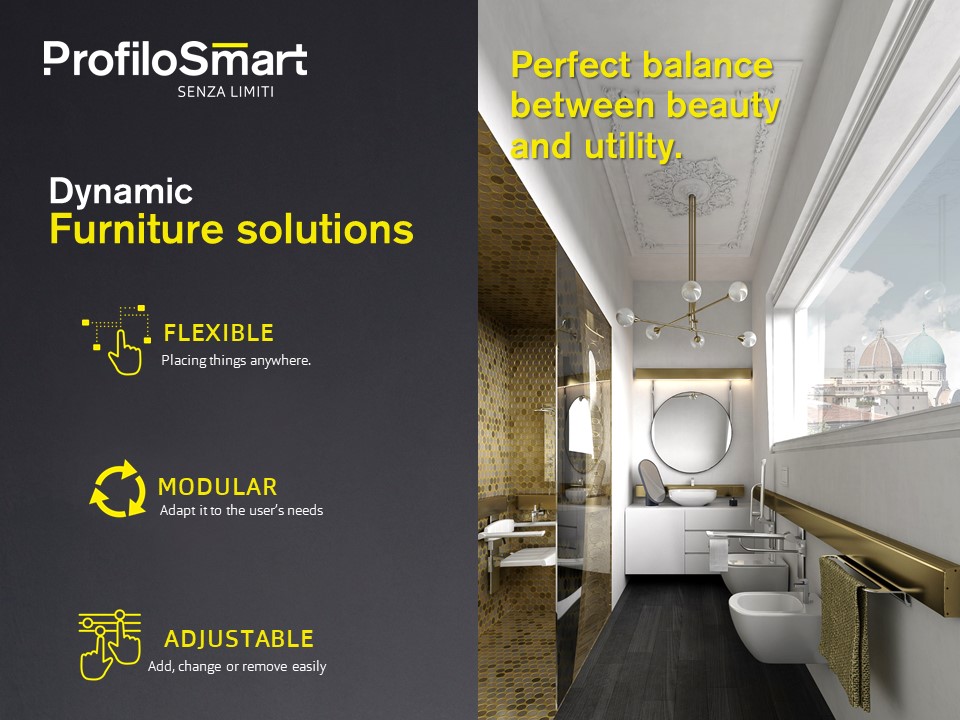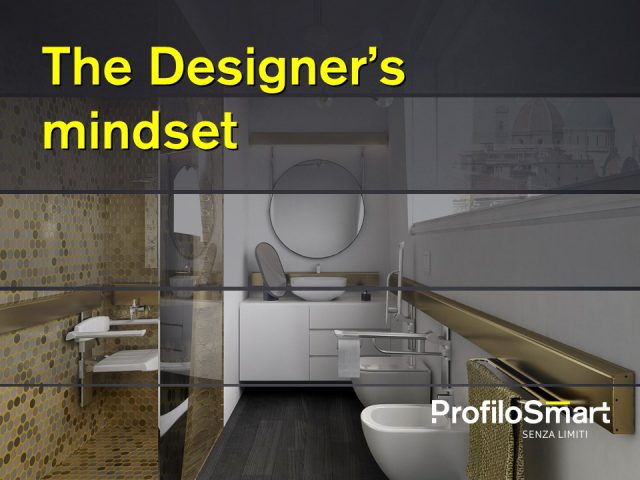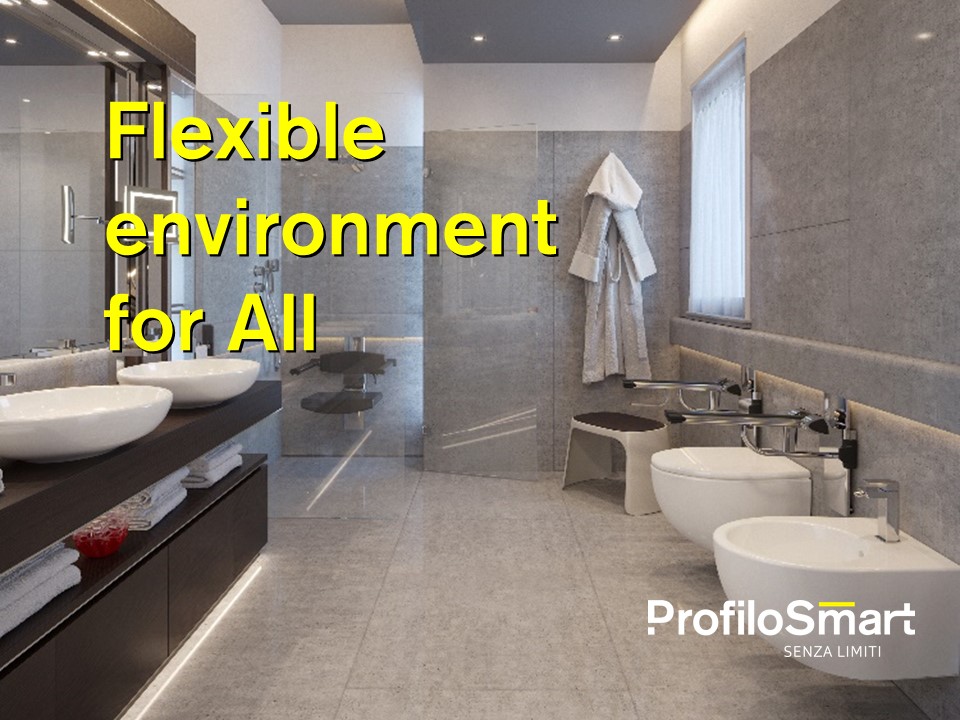Shower seat Features
22nd November 2019Profilo Smart Annual Review 2019
6th December 2019
Designing
outside the box.
Currently, living environments are not necessarily designed for all, for the following reasons: lack of equal aesthetic, waste of space, rigid designs, compliance limitations, exclusivity, standardization and ultimately the traditional designer’s mindset…
Architects and designers need to consider that the designing process will not end when the project is delivered. Think about all the possible users and their singularities. They expect to have a pleasant time without worrying about whether they fit in in the place or not.
The following provides an overview of the different types of mindset when designing exclusive or inclusive facilities:
Case 1:
Traditional designers' mindset:
In the First Case, we have the option to make our designs for individuals, which addresses their specific needs.
As a result, only the individual is fit to use that space, which equals to exclusive use.
There are different types of needs and difficulties that people experience in any environment, from a person who has no significant problems but who would appreciate a well-designed accessible and usable place to a person who is unable to use the space at all.
Case 2:
Traditional designers' mindset:
In the Second Case, of traditional designs, we make our designs for everybody, allows to meet the needs for average people.
Is that more inclusive?
What happens is only people who meet the standards can use that product or space, which equals again an exclusive design.
Interestingly, the word Standard, if you look it up in the dictionary, means normal or average. That is the message we are sending by only seeking to comply with a standard design project, a design that is supposed to be “normal and average”.
Case 3:
Dynamic designers’ mindset:
What we need to develop is a dynamic designers’ mindset when we are creating projects, which allows addressing everybody’s needs.
Now we are talking about inclusive use!
Welcoming everybody to use that product or space, which finally equals an inclusive design to the greatest extent possible.
INCLUSIVE must be the new NORMAL the EXPECTED result and way of doing everything. The normal impact is to not exclude any section of society or any party involved in something.
Dynamic
furniture solutions
Profilo Smart design and manufacture universal design solutions while following the current regulations as stated on the Universal Design organizations.
Start creating a dynamic environment, using a modular system meaning that accessories are easy to move and remove.
Once they are not needed, it is possible to turn an accessible room into a regular one within minutes.
This unique feature gives the management of any facility the rare chance to better allocate their users and never have to turn one down again.


